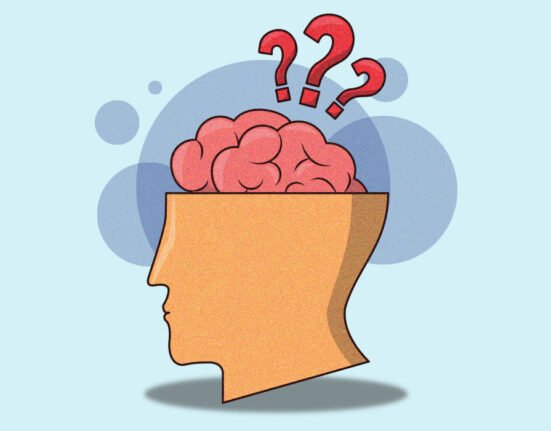Children are often naughty and do things that their parents ask them not to. This is their way of exploring their environment. Sometimes they are moody, and other times they might throw tantrums to get what they want. In such situations, it becomes difficult for parents to find the right approach to dealing with their child. Above that, when the risk of the occurrence of behavioural disorders comes in, it becomes necessary for parents to take the right call for their children’s well-being. There’s a thin line between those children that are going through a phase, and those suffering from behavioral disorders.
Read More: The psychology behind parents love
This article aims to understand these behavioural disorders, better equipping parents to recognize their occurrence, and preparing them to face such situations.
Common Behavioral Disorders in Children:
According to the U.S. Department of Health and Human Services, behavioural disorders can be characterized those disruptive behavioural patterns in children that can be observed for a minimum period of 6 months. These psychological disorders are not unheard of. However, parents aren’t aware of its specifics. As a result, they are unable to identify its early signs or provide the right kind of support to their children. Although there are many behavioural disorders, let’s look at the most common ones.
Oppositional Defiant Disorder (ODD):
A child with ODD is likely to exhibit defiant behaviour in front of authority figures. They usually violate minor rules, rather than major ones that are against social norms. ODD can cause behavioural characteristics such as exhibiting temper tantrums, refusing to apologize, being irritable, etc. These children might be provocative, intentionally upsetting those around them. ODD can only be diagnosed when such behaviour is persistent and effects the child or their surroundings. This disorder can cause a barrier between parents and their children, disabling their ability to foster positive relationships. These children also tend to have low self-esteem.
Read More: Empathy in Action: Helping Children Navigate Big Emotions
Attention Deficit Hyperactivity Disorder (ADHD):
ADHD consists of three sub-types, the inattentive type, hyperactive-impulsive, and the combined type. Let’s understand the three different characteristics that a child with ADHD might show. Inattention is the difficulty associated with the ability to pay attention. As a result, they are unable to do one task for a long time. They might also fail to complete a task. Additionally, they forget instructions given to them by authority figures. Impulsivity stops these children from thinking before acting. They are more accident-prone due to this characteristic. Over-activity results in constant fidgeting, even in wrong situations. These children always feel restless. ADHD is seen to occur more in boys than in girls. However, it occurs in both genders. Diagnosis usually happens around the age of 6 or later, since symptoms can be similar to regular behaviors of younger children.
Conduct Disorder (CD):
Children with this disorder exhibit delinquent behaviour. They go against rules and social norms. Their actions lead to negative impacts on academic, social and personal life. This disorder can be developed during adolescence or childhood. These children are usually aggressive. They are likely to damage property or others’ possessions. Children with CD also face problems in interpreting others’ behaviour. They act tough, but might be very insecure. They might become serial liars or engage in acts such as bullying.
Risk Factors:
Many factors influence behaviour, and more add to it when you consider the risk of behavioural disorders. Let’s look at some of these factors.
- Gender: Boys have a higher likelihood of suffering from behavioural disorders than girls.
- Birth or Pregnancy Complications: Premature birth or other difficulties during pregnancy might increase the risk of these disorders.
- Temperament: Children who are difficult to manage from an early age due to aggression are likely to develop behavioural disorders.
- Brain Structure & Development: Certain changes in shape or chemistry in the brain are noticed in children with behavioural disorders. Areas that control attention levels show lower functioning in ADHD children.
- Genetics: A child from a family with a history of behavioural disorders has a genetic predisposition to it. Older studies have shown that genetic traits are similar in people with ADHD, CD and ODD.
Read More: Can Disney Play a Major Role in Child Development?
Supporting Children with Behavioral Disorders:
Being there for a child with behavioural disorders might seem very difficult. It puts an additional task on the plate for parents. Over time, keeping up the support also becomes hard since parents don’t see their children appreciating these efforts, further doubting if they are helpful at all. Yes, it is a challenge, but it can be faced by keeping some things in mind.
- Parent Training Programs: Raising a child with a behavioural disorder is not something that every parent is prepared for. To guide them, these programs are available, proving useful to the parents, and in return, to the child.
- Individualized Education Plans: These are personalized education plans designed to help children who might have difficulties adapting to a regular learning environment.
- Social Skills Training: Since these children struggle with social interactions, this kind of training encourages socializing and adapting to socially accepted behaviours.
- Behavioural Therapy: One of many other psychological interventions that may prove to be helpful is therapy, guided by a mental health professional trained to deal with such disorders.
Read More: Impact of Hostile Parenting on Child’s Mental Health
Summing Up
Childhood Behavioral disorders are commonly occurring, but also, to some extent, unexpected for parents. It’s important to pay close attention to children’s behavioural changes as they grow. While many behavioural changes are common in children, persistent negative behaviour might be a reason for you to take your child to visit a mental health professional. Regular checkups can provide certainty, and also help take action on time. Professional intervention might be useful, as it also provides professional guidance to parents on how to approach such situations. If your child has a behavioural disorder, there is nothing to worry about. Just be there for them and support them in any way that you can. Awareness about the topic lets you be more calm and prepared to take the next step if the need arises.
Read More from Psychologs
- The Basics of Child Psychology
- How Does Feel To Became A Parent?
- The Hidden Scars of Witnessing Domestic Violence in Childhood
- Dear Parents, It’s time you have that conversation with your child
- Intellectual Disability: It’s Time We Pay Attention
References +
- https://www.medicalnewstoday.com/articles/behavioral-disorders-in-children
- https://www.betterhealth.vic.gov.au/health/healthyliving/behavioural-disorders-in-children
- https://www.healthline.com/health/parenting/behavioral-disorders-in-children#Early-Childhood-Behavioral-and-Emotional-Disorders













Leave feedback about this